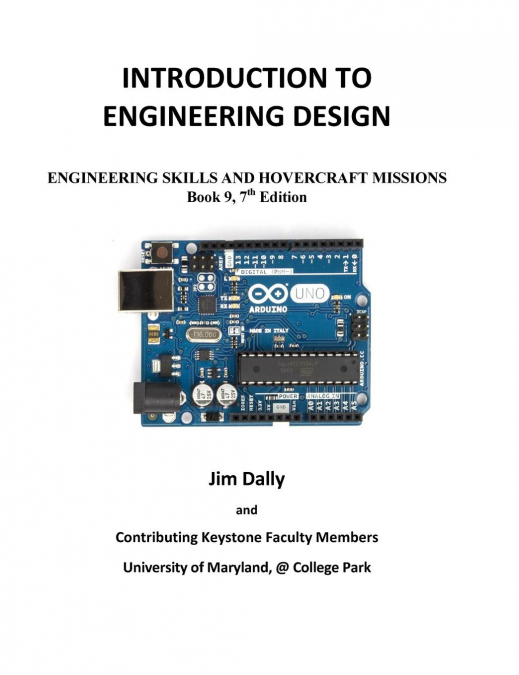
 Donde los libros
Donde los libros
 Librería 7artes
Librería 7artes
 Librería Elías (Asturias)
Librería Elías (Asturias)
 Librería Kolima (Madrid)
Librería Kolima (Madrid)
 Librería Proteo (Málaga)
Librería Proteo (Málaga)
This book is the seventh edition of the ninth textbook in this series dealing with Introduction to Engineering Design. Jim Dally, working with College House Enterprises and faculty members in the Clark School of Engineering, has prepared eight previous books in this series for the first-year engineering students of the University of Maryland at College Park. Several other Colleges of Engineering have adopted one or more of the books in this series to introduce design and engineering skills for their first or second year students. The design, build and testing of a hovercraft model, described in Book 9, is such an interesting and challenging project that this is the seventh year we have used it (twelve previous semesters) with approximately 7,000 students. The textbook is used to support the students during a semester-long project where they design and build a hovercraft. Content is covered with reading assignments and students use the text as a reference document for independent study. Exercises are provided at the end of each chapter. The book contains 17 chapters to present the many topics that first year engineering students should understand as they proceed through a significant portion of the product realization process. An Introduction to the course and to the textbook is provided in Chapter 1 to alert the students to the demands of the course and to introduce them to the problems frequently encountered by other students in designing, building and testing a model of a hovercraft. Information on team skills and the importance of product development is covered in Chapters 2 and 3. Several hovercraft missions are also presented in Chapter 3, together with a description of the design concepts involved in hovercraft development. Design of a hovercraft enables instructors with an opportunity to integrate a wide spectrum of knowledge about many engineering topics. The student’s hands-on participation in a design, building, testing and competing in a hovercraft mission significantly enhances their learning process. The theoretical background on fluid mechanics, needed to conduct elementary design analyses for the hovercraft, is presented in Chapter 4. Chapter 5 describes basic electric circuits, and batteries to provide technical background helpful for the design and control of the hovercraft. Many different sensors, used to aid in navigating the hovercraft, are introduced in Chapter 6. Concepts of statics and dynamics are introduced in Chapter 7 to enable the students to understand the forces and moments and their effect on controlling the motion of their hovercraft. Finally, an introduction to programming the Arduino microprocessor in a version of C is included in Chapter 8. Two chapters on engineering graphics are included. In Chapter 9 the basic rules used in preparing engineering drawings are covered in detail. The use of tables and graphs in communicating engineering information using Microsoft Excel is presented in Chapter 10. The very important topic of communications is covered in two chapters. Chapter 11, on technical reports, describes many aspects of technical writing and library research. Design briefings, covered in Chapter 12, shows the distinction among speeches, presentations and group discussions. An introduction to the engineering profession, described in Chapter 13, covers engineering disciplines, on-the-job activities, salary statistics and registration information for your PE license. A useful student survival guide is given in Chapter 14. Three chapters dealing with engineering and society are also included.